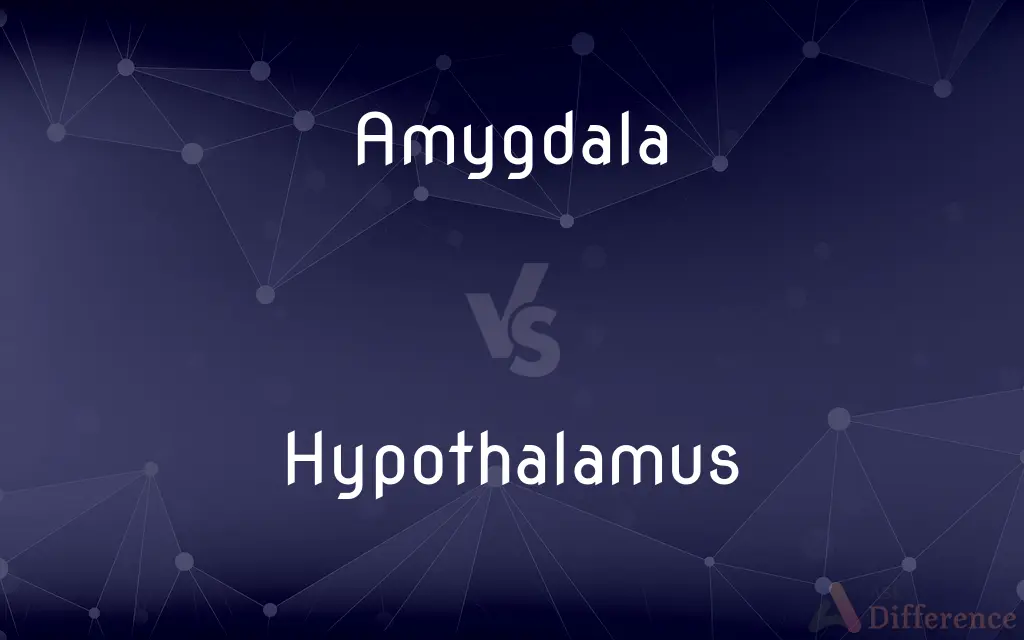Amygdala vs. Hypothalamus — What's the Difference?

Difference Between Amygdala and Hypothalamus
ADVERTISEMENT
Compare with Definitions
Amygdala
The amygdala (; plural: amygdalae or amygdalas; also corpus amygdaloideum; Latin from Greek, ἀμυγδαλή, amygdalē, 'almond', 'tonsil') is one of two almond-shaped clusters of nuclei located deep and medially within the temporal lobes of the brain's cerebrum in complex vertebrates, including humans. Shown to perform a primary role in the processing of memory, decision-making and emotional responses (including fear, anxiety, and aggression), the amygdalae are considered part of the limbic system.
Hypothalamus
The hypothalamus (from Ancient Greek ὑπό, "under", and θάλαμος, "chamber") is a portion of the brain that contains a number of small nuclei with a variety of functions. One of the most important functions of the hypothalamus is to link the nervous system to the endocrine system via the pituitary gland.
Amygdala
Either of two small, almond-shaped masses of gray matter that are part of the limbic system and are located in the temporal lobes of the cerebral hemispheres. Also called amygdaloid nucleus.
Hypothalamus
The part of the brain that lies below the thalamus, forming the major portion of the ventral region of the diencephalon and functioning to regulate bodily temperature, certain metabolic processes, and other autonomic activities.
Amygdala
(neuroanatomy) Each one of the two regions of the brain, located as a pair in the medial temporal lobe, believed to play a key role in processing emotions, such as fear and pleasure, in both animals and humans.
ADVERTISEMENT
Hypothalamus
(anatomy) A region of the forebrain located below the thalamus, forming the basal portion of the diencephalon, and functioning to regulate body temperature, some metabolic processes and governing the autonomic nervous system.
Amygdala
An almond.
Hypothalamus
A basal part of the diencephalon governing autonomic nervous system
Amygdala
One of the tonsils of the pharynx.
Amygdala
An almond-shaped neural structure in the anterior part of the temporal lobe of the cerebrum; intimately connected with the hypothalamus and the hippocampus and the cingulate gyrus; as part of the limbic system it plays an important role in motivation and emotional behavior
Share Your Discovery

Previous Comparison
Gound vs. Rheum
Next Comparison
Outline vs. Overview













































